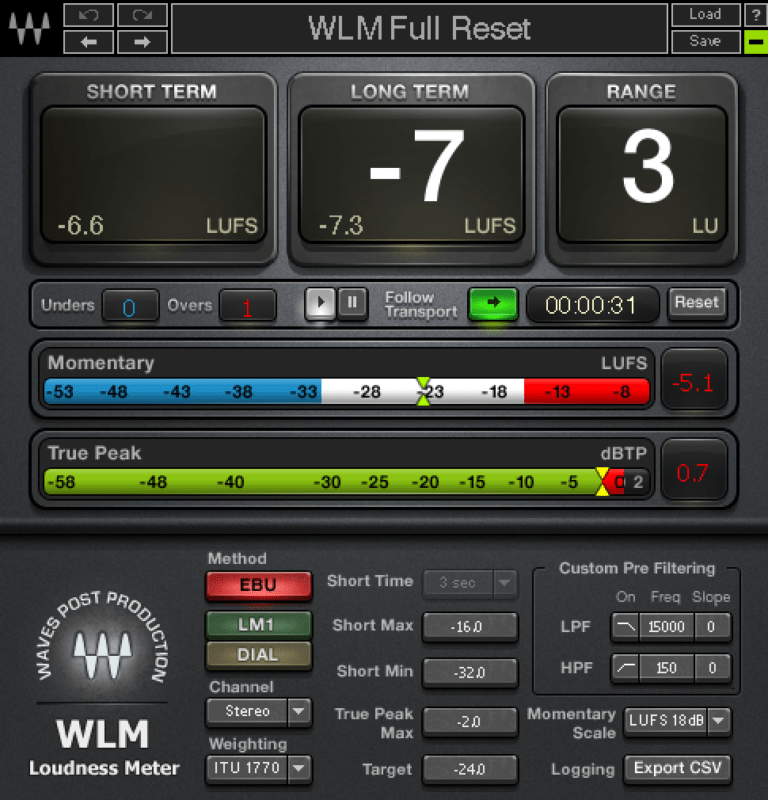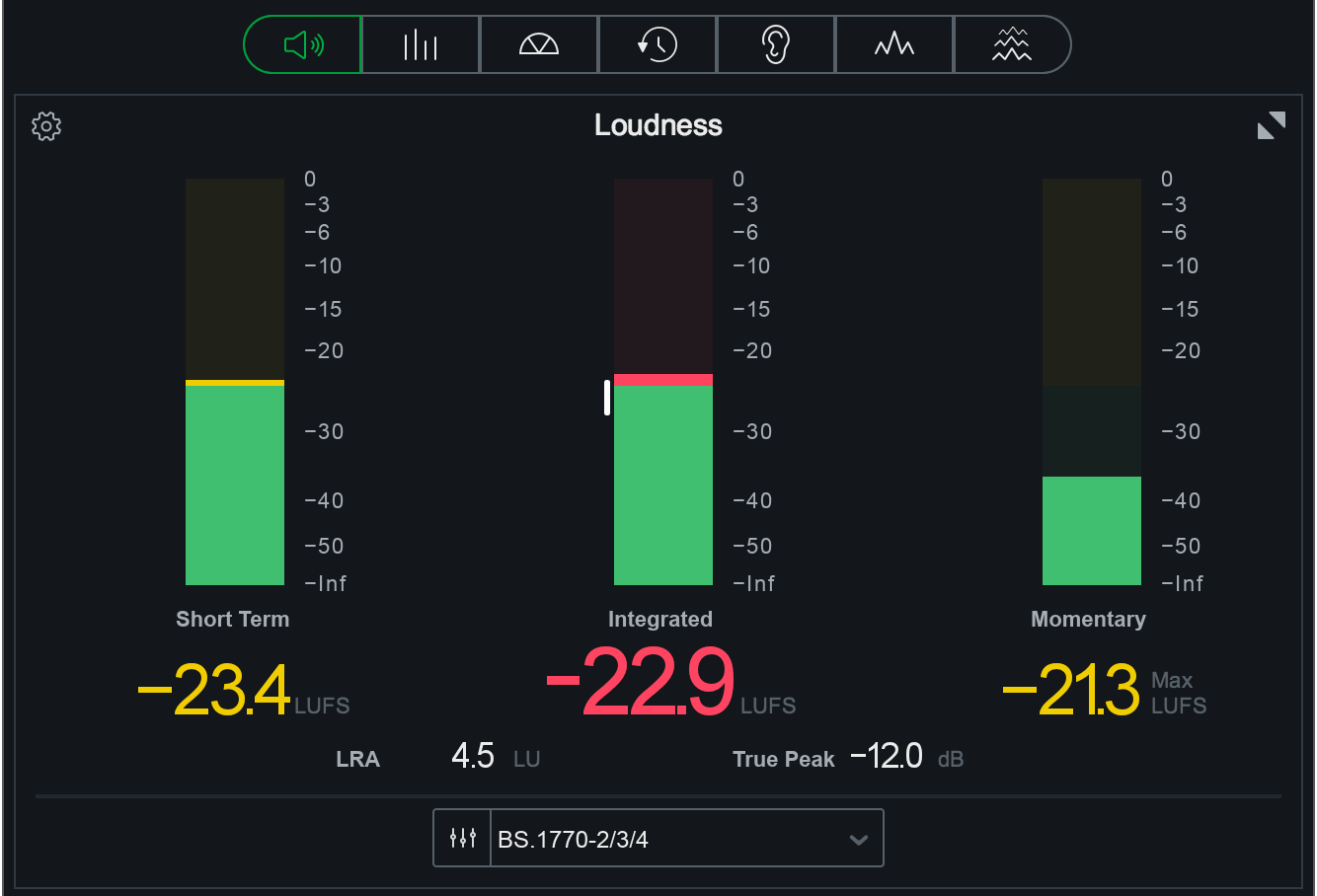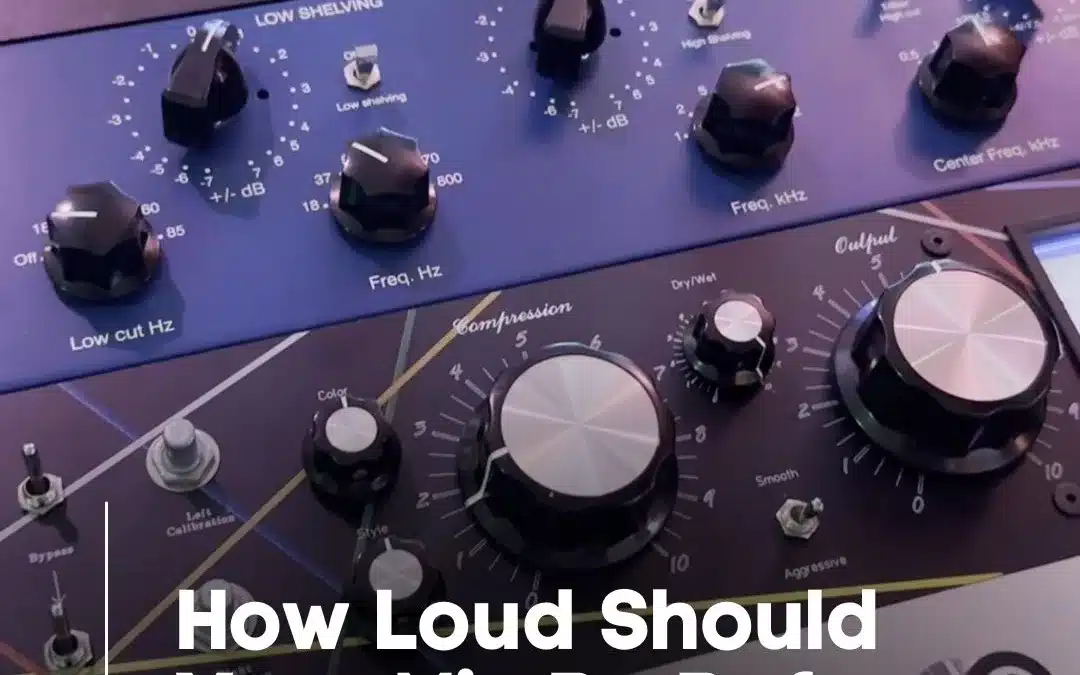The recommended loudness level for your mix before mastering is -6 dB. Achieving this enables a wide enough dynamic range, clarity, and headroom necessary for mastering.
One crucial step in the production of music is mastering. It helps to enhance the overall quality and sound of a track. However, before sending your mix for mastering, it’s essential to prepare adequately. One of the critical considerations is the loudness level.
Mixing engineers recommend aiming for a loudness level of -6 dB to allow sufficient headroom and dynamic range necessary for mastering. Going too loud or too low can significantly affect the final product resulting in distortion or lack of clarity. Mastering engineers have something to work with when the levels are correctly set before handing the track over, making their job easier and producing better results. Therefore, it’s crucial to get the levels right for a polished sounding product.

Credit: majormixing.com
Understanding Volume Levels
Before mastering your mix, it’s important to understand volume levels. The recommended volume level for your mix should be around -6dB to -3dB, allowing enough headroom for mastering. It’s important to avoid pushing your mix too loud, which can cause distortion and clipping.
Why Volume Levels Are Important
Volume levels play a crucial role in music production. Whether you’re mixing or mastering, understanding volume levels is essential. It’s essential to know how to measure your mix’s loudness before moving forward with the mastering process. Failure to observe correct levels could lead to an overcompressed sound that leaves your music sounding flat and lifeless.
Measuring Volume
Understanding how to measure the loudness of your mix is essential. In the US, audio levels are commonly measured in decibels (dB). The higher the dB, the louder the sound. However, measuring the loudness of a mix goes beyond just reading dB levels on a meter. There are two essential levels to consider, the peak levels and RMS levels.
Peak Levels Vs. Rms Levels
Peak levels and RMS levels are two different ways of measuring the loudness of a mix. Peak levels measure the highest point of the sound, while RMS levels hold a more accurate representation of the perceived loudness of that sound. Your master should peak at no more than -3dB. It’s easy to think the louder, the better, but that’s not always the case. If the peaks of your mix are too high, it can be overloading the master, causing distortion. In conclusion, there is no set rule to follow when it comes to the loudness of your mix. However, understanding the importance of volume levels, measuring them correctly, and knowing the difference between peak and RMS levels can affect how your final mix sounds. By mastering these concepts, you can ensure your final product is perceived at its best.

Credit: majormixing.com
Setting The Right Volume
Setting the Right Volume is an essential factor when it comes to mastering your music. It’s imperative to set the right level of loudness, as it can affect the tonality and clarity of your track. If you go too high or too low, your final output can turn out muddy, distorted, or weak. In this section, we’ll go into detail about the Factors to Consider, balancing Loudness and Dynamics, and Pre-Mastering Considerations to help you find the optimum volume level for your mix before sending it for mastering.
Factors To Consider
While setting the right volume level, there are some essential factors to consider:
| Factors | Description |
|---|---|
| Genre | The genre of your music can affect the loudness level you’ve chosen. |
| Intended Platform | Knowing the platform your music will be played on should be considered because it will help you decide your track’s optimal loudness level. |
| Target Audience | Keeping your target audience’s preference in mind, it’s essential to set the level of loudness that will captivate and leave them with a memorable experience. |
Balancing Loudness And Dynamics
An essential element to achieve a balanced mix is to find the equilibrium between the loudness and dynamics of your song. Your mix needs to have flexibility and movement to keep the listener engaged.
Here are some tips to strike a balance between loudness and dynamics:
- Use compression to regulate the dynamics of your track.
- Try to avoid overcompression as it can suck the life out of your song.
- Add subtle automation to create interest and variety in your mix.
Pre-mastering Considerations
Before sending your final mix for mastering, there are some essential pre-mastering considerations to keep in mind.
- Check and correct the frequency balance of your mix.
- Remove any unwanted noises or inconsistencies in your song.
- Use reference tracks to compare your music to commercial tracks that are similar in genre and style.
By following these pre-mastering considerations, you will ensure your mix is in the best possible shape before mastering, and the mastering engineer will have a much smoother process of achieving your desired sound.
Optimizing Your Mix For Mastering
Mixing is said to be an art that requires a good ear, knowledge of different instruments and how they sound when mixed. The mixdown session is where all the musical elements come together to produce a final sound. A well-mixed track sounds balanced, with each instrument occupying its own sonic space. To achieve the best possible sound for your mastering engineer to work with, it’s essential to optimize your mix for mastering. Here are some tips to help you optimize your mix for mastering.
Clean Up Your Mix
Before mastering, make sure your mix is as clean as possible. This means identifying and removing unwanted noise, clicks, pops, and hiss that may have crept in during recording or mixing. In addition, be sure to eliminate any dead air or extraneous noises at the beginning or end of your audio file.
Eliminating Clipping
Clipping is a common mixing problem where the audio signal exceeds the maximum decibel limit, leading to distortion. To eliminate clipping, reduce the volumes of the instruments or channels that are causing the distortion. Alternatively, you can use a limiter to control the levels of your mix and prevent any overloads.
Maximizing Dynamics
Dynamic range refers to the difference between the loudest and softest parts of your track. If your mix has a low dynamic range, your mastering engineer may struggle to make it sound great. The solution is to increase the dynamic range by creating contrast between the loud and soft parts. Use compression to reduce the dynamic range of loud parts, and EQ to add clarity to the softer sounds. A mix with good dynamics sounds lively and full of energy.
Following these tips will help you optimize your mix for mastering, resulting in a final product that sounds great on any system. Remember that a well-mixed track is the foundation for a great master.
Deciding On The Ideal Volume Level
Finding the perfect volume level for your mix before mastering is crucial. You want to make sure the audio levels are balanced and the overall sound is cohesive. Aim for a volume that is loud but still allows for dynamic range and clarity in your mix.
When it comes to mixing audio tracks, deciding on the ideal volume level is crucial. But how loud should your mix be before mastering? This is one of the most common questions asked by sound engineers and producers alike. The answer is not straightforward, as it depends on several factors, including the target volume level for mastering, the type of music, the intended playback medium, among others. In this post, we’ll delve deeper into what you need to consider before deciding on the ideal volume level for your mix before mastering.
Target Volume Level For Mastering
Before mastering, it’s essential to have a target volume level in mind. This will guide you as to how far you can push the volume during the mixing stage. The most common target volume level for mastering is -14 dB RMS, and the peak level should not exceed -6 dB. However, some mastering engineers prefer higher peak levels, up to -3 dB, for genres such as hip-hop or EDM. It’s crucial to consult with a mastering engineer beforehand to know the ideal target level for your project.
Factors That Influence The Target Volume Level
Several factors can influence the target volume level for mastering. Here are some of them:
- Genre: Different genres have different loudness norms. For instance, classical music tends to have lower levels than pop music.
- Playback Medium: The intended playback medium can also influence the target volume. For instance, streaming services such as Spotify or Apple Music have loudness normalization algorithms that adjust the volume of your track to match other tracks on their platform.
- Dynamic Range: The dynamic range of the mix can also influence the target volume level. A mix with high dynamic range may require lower volumes to preserve the transients and avoid distortion.
Working With A Professional Mastering Engineer
Working with a professional mastering engineer can help you determine the ideal target volume level for your mix. The mastering engineer can provide valuable insights based on their experience and the genre of music. They can also apply their expertise to optimize the dynamics, frequency response, and stereo image to achieve a polished and competitive sound. It’s crucial to provide the mastering engineer with a mix that has a reasonable headroom to allow room for processing. In conclusion, deciding on the ideal volume level for your mix before mastering requires consideration of several factors. Aiming for a specific target volume level for mastering can encourage you to mix at appropriate levels and avoid over-compressing or distorting the audio. Working with a professional mastering engineer can also help you achieve the desired loudness and competitive sound.
What To Avoid
What to Avoid:
When it comes to mixing audio, a common mistake that people make is to prioritize loudness over other important aspects like dynamics. Here are two crucial things that you should avoid in your mix:
Don’t Compromise Dynamics For Loudness:
A common misconception about mixing is that a master should be as loud as possible. The truth is that dynamics are very important in the mixing process; they’re what give a song its punch and power. If you push a mix too hard in an attempt to make it louder, then you’re likely to compromise its dynamics. This can make it sound flat and lifeless, regardless of how loud it is.
Avoid Over-limiting:
When a mix is pushed too loud, the audio peaks can reach the maximum level that the system can handle. This creates digital clipping, where the sound waves are cut off and distorted. Many mix engineers resort to over-limiting to control the peaks and make the mix louder, but this can cause severe damage to the mix. Overuse of limiters can cause digital distortion, loss of dynamics, and create an overall harsh sound.
When you’re mixing your audio, you want to keep in mind that achieving the right mix balance should be your priority. Both dynamics and loudness are important, but it’s essential to maintain a balance between the two. By avoiding the overuse of limiters and not compromising on dynamics, you can create a mix that sounds powerful, punchy, and perfectly balanced.
Tips For Finding The Sweet Spot
When it comes to mixing, finding the right loudness level can be a bit tricky. You don’t want to go too loud and risk ruining the quality of your mix, but you also don’t want it to be too quiet and underwhelming. So, how loud should your mix be before mastering? Here are some tips for finding the sweet spot:
Mix
The key to finding the right loudness level is in the mix itself. Make sure your levels are balanced and that no one element overpowers the others. You want everything to be audible, but not at the expense of the overall cohesiveness of the mix. Ideally, you want your final mix to peak at around -6dB to -3dB on the meter.
Listen
Once you’ve mixed your track, it’s time to give it a listen. This is where reference tracks come in handy. Choose a track that has a similar sound and style to your own and listen to it alongside your mix. This will give you a better idea of your track’s loudness level compared to a professionally mixed and mastered track.
Take Breaks
It can be easy to get lost in the mixing process, but it’s important to take breaks. Your ears can become fatigued after prolonged exposure to loud music, which can result in inaccurate judgments about the loudness level of your mix. Take a break for a few minutes every hour to give your ears a rest. Additionally, try to mix at a lower volume to reduce ear fatigue.
Use Reference Tracks
We briefly mentioned this earlier, but using reference tracks can be incredibly helpful in finding the right loudness level. Choose a few professionally mixed and mastered tracks that have a similar sound and style to your own and listen to them alongside your mix. This will give you a better understanding of what your mix should sound like and can guide you in finding the right loudness level.
Master With Care
Once you’ve found the right loudness level for your mix, it’s time to master it. However, be sure to approach mastering with care. A heavy-handed approach can ruin all of the hard work you put into mixing and finding the right loudness level. Make small adjustments and trust your ears.

Credit: mixandmastermysong.com
Frequently Asked Questions On How Loud Should Your Mix Be Before Mastering
What Should A Mix Sound Like Before Mastering?
A mix should sound balanced and cohesive before mastering. All the elements should be audible and clear, with no clipping or distortion. The levels and panning should be appropriate and the track should have a good sense of depth and width.
This will ensure that the mastering process can enhance the mix without introducing any flaws.
How Do You Know When Your Mix Is Ready For Mastering?
You’ll know when your mix is ready for mastering by checking these indicators: Your mix is balanced, well-organized, and there’s no distortion. You’ve left enough headroom for mastering, and your mix is not too quiet. Additionally, you must listen to it on various devices to ensure that it sounds consistent.
What Is The True Peak Before Mastering?
The true peak before mastering refers to the highest level a mix can reach without any mastering processing. It is important because it allows for a clear understanding of what can be improved and enhanced through the mastering process. It can help create a clearer and cohesive sound for the final product.
How Many Db Should A Mastered Song Be?
The optimal loudness level for a mastered song is -14 dB integrated LUFS for streaming platforms like Spotify, with a true peak value no higher than -1 dB. However, some mastering engineers may aim for slightly different levels based on their preferences or client specifications.
Conclusion
Finding the ideal volume for your mix before mastering can be a challenge. However, the right approach can ensure that your track sounds professional and polished. Always prioritize maintaining the sonic balance, keeping in mind the technical requirements of the mastering process.
Most importantly, trust your ears and don’t be afraid to experiment until you achieve the desired sound. With these tips, you can confidently prepare your mix for mastering and unleash its full potential.